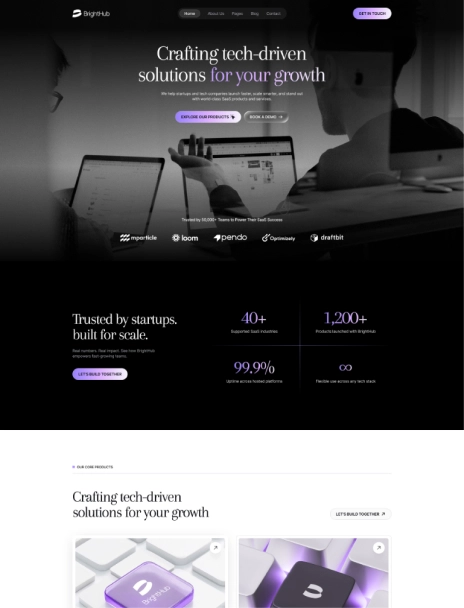The Rise of Influencer Marketing in India: What Brands Need to Know

Introduction
In recent years, influencer marketing has witnessed an exponential surge in India, transforming the landscape of digital marketing. Brands, both big and small, are increasingly leveraging the reach and authenticity of influencers to connect with their target audiences. This article delves into the dynamics of influencer marketing in India, its growth trajectory, and the critical aspects brands must consider to maximize their campaigns’ effectiveness.
The Evolution of Influencer Marketing in India
A Brief History
The concept of influencer marketing is not new, but its digital form has evolved rapidly over the past decade. Initially dominated by celebrities, the domain has now broadened to include micro-influencers and nano-influencers, who often have more engaged and loyal followings. The proliferation of social media platforms like Instagram, YouTube, and TikTok has democratized influence, allowing everyday individuals to become powerful voices.
Current Landscape
India’s diverse demographic landscape presents a unique opportunity for brands. With a burgeoning middle class and increasing internet penetration, more people are turning to social media for information and entertainment. Influencers in India range from fashion bloggers and tech reviewers to fitness enthusiasts and food critics, each catering to specific niches and communities.
Key Drivers of Influencer Marketing Growth in India
Social Media Penetration
India is home to over 448 million social media users, a number that continues to grow. Platforms such as Instagram, YouTube, and Facebook have become integral to daily life, offering influencers a vast playground to showcase their content and engage with followers.
Trust and Authenticity
Consumers today seek authenticity. Influencers, with their relatable personas and honest reviews, have cultivated a level of trust that traditional advertisements often lack. This trust translates into higher engagement rates and more effective marketing campaigns.
Cost-Effectiveness
Compared to traditional advertising channels, influencer marketing offers a cost-effective way to reach a large audience. Collaborations with micro and nano-influencers can be particularly budget-friendly, providing significant ROI for brands with limited marketing budgets.
Strategies for Effective Influencer Marketing
Identifying the Right Influencers
The success of an influencer marketing campaign hinges on selecting the right influencers. Brands should look beyond follower counts and consider engagement rates, audience demographics, and the influencer’s alignment with brand values. Tools and platforms that analyze influencer metrics can aid in making informed decisions.
Crafting Authentic Collaborations
Authenticity is key. Influencers should have creative freedom to produce content that resonates with their audience. Forced or overly scripted promotions can backfire, leading to a loss of credibility for both the influencer and the brand.
Leveraging Diverse Platforms
Different platforms cater to different types of content and audiences. For instance, Instagram is ideal for visually appealing content, while YouTube is better suited for in-depth reviews and tutorials. Brands should diversify their campaigns across multiple platforms to maximize reach and impact.
Monitoring and Measuring Success
Measuring the success of influencer campaigns is crucial. Brands should track key metrics such as engagement rates, click-through rates, and conversion rates. This data not only helps in evaluating the effectiveness of current campaigns but also informs future strategies.
Case Studies: Successful Influencer Campaigns in India
Case Study 1: Mamaearth
Mamaearth, a popular Indian skincare brand, has effectively utilized influencer marketing to build its brand. By collaborating with micro-influencers in the beauty and wellness space, Mamaearth has managed to create a strong community of loyal customers. These influencers share personal stories and reviews, making the brand’s products more relatable and trustworthy.
Case Study 2: Flipkart
E-commerce giant Flipkart has leveraged influencer marketing to boost sales during major shopping events like the Big Billion Days. By partnering with celebrities and macro-influencers, Flipkart has successfully generated buzz and driven significant traffic to its platform, resulting in record-breaking sales figures.
Challenges in Influencer Marketing
Fake Followers and Engagement
One of the significant challenges in influencer marketing is the prevalence of fake followers and engagement. Brands must conduct thorough checks to ensure they collaborate with genuine influencers. Tools that analyze follower authenticity can be invaluable in this regard.
Maintaining Authenticity
As influencer marketing becomes more mainstream, maintaining authenticity is becoming increasingly challenging. Influencers need to strike a balance between sponsored content and organic posts to keep their audience engaged and avoid appearing overly commercial.
Regulatory Compliance
With the rise of influencer marketing, regulatory bodies are beginning to scrutinize the industry more closely. In India, the Advertising Standards Council of India (ASCI) has issued guidelines for influencer advertising. Brands and influencers must ensure compliance to avoid legal pitfalls.
The Future of Influencer Marketing in India
Growing Influence of Regional Content Creators
As internet penetration increases in rural and semi-urban areas, regional content creators are gaining prominence. Brands can tap into these influencers to reach vernacular-speaking audiences, thereby expanding their market reach.
Integration with E-commerce
The integration of influencer marketing with e-commerce is set to grow. Social media platforms are introducing shopping features that allow users to purchase products directly from influencer posts. This seamless shopping experience can significantly boost sales for brands.
Emphasis on Video Content
Video content is becoming increasingly popular, with platforms like YouTube, Instagram Reels, and TikTok leading the charge. Brands should focus on creating engaging video content in collaboration with influencers to capture the attention of their target audience.
Conclusion
Influencer marketing in India is on an upward trajectory, offering brands a powerful tool to connect with consumers. By understanding the landscape, leveraging the right influencers, and crafting authentic collaborations, brands can maximize the impact of their marketing efforts. As the industry evolves, staying abreast of trends and adapting strategies accordingly will be key to sustained success.













 Jun 20,2024
Jun 20,2024  By instainnovate
By instainnovate 

